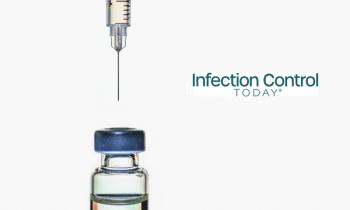
Admission Screening, Disinfection Protocol Can Tackle Acinetobacter
Multidrug-resistant (MDR)Â Acinetobacter baumannii is a healthcare-associated pathogen that can live for months in both a wet and dry environment. The high prevalence of this organism in the hospital environment results in colonization of the skin and respiratory tract in the patient population, which can lead to development of infection. J.L. Whitaker, of University Community Hospital in Tampa, Fla., sought to determine if development of an admission screening protocol and 10 percent hypochlorite disinfection will significantly reduce the incidence of healthcare-associated infections (HAIs) in the patient population.
In a presentation at the International Conference on Prevention & Infection Control (ICPIC) held in Geneva, Switzerland June 29-July 2, 2011, Whitaker reported that a case-only study was conducted over a 12-month period. Interventions used to reduce the incidence of healthcare-associated Acinetobacter baumannii included 10 percent hypochlorite disinfection, hand hygiene, special contact isolation for suspected and confirmed cases, educational tool for clinicians, patient and visitors, daily isolation rounds, automated report functions, and standardized nursing unit isolation practices. Pulse-field gel electrophoresis was performed on all isolates to determine if there was a common genotype among the patient population.
There were a total of 85 isolates collected during the 12-month period. Fifty-two (61 percent) were healthcare-associated and 33 (39 percent) were community-acquired. In the first month of implementation of a new protocol to collect respiratory specimens on admission from other acute-care facilities, there was an 87.5 percent reduction in healthcare-associated isolates.
Whitaker concludes that a combination of an admission screening protocol of patients transferred from other acute care facilities, implementation of a 10 percent hypochlorite disinfection protocol and isolation of those patients at time of admission until negative culture results can prevent transmission of healthcare-associated and community-acquired MDR Acinetobacter in a healthcare institution.
Reference: Whitaker JL. MDR Acinetobacter baumanni in the short term and long term acute care setting. Presentation at the International Conference on Prevention & Infection Control (ICPIC). BMC Proceedings 2011, 5(Suppl 6):O26doi:10.1186/1753-6561-5-S6-O26
Â
Newsletter
Stay prepared and protected with Infection Control Today's newsletter, delivering essential updates, best practices, and expert insights for infection preventionists.






